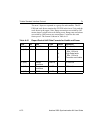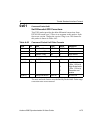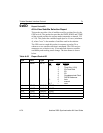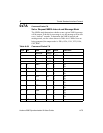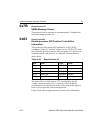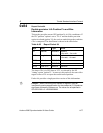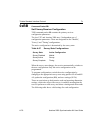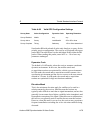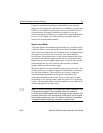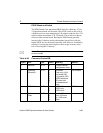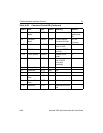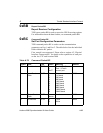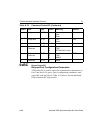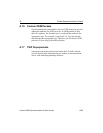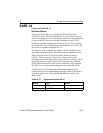
A-80 Acutime 2000 Synchronization Kit User Guide
Trimble Standard Interface Protocol
A
Frequent constellation switching is undesirable because position
jumps may be experienced when Selective Availability is present and
DGPS is not available to remove these effects. The benefit of a low
elevation mask is that more satellites are available for use in a
solution and a better PDOP may be yielded. The current default mask
is set to 0.1745 radians (10°) and provides a reasonable trade-off
between the benefits and drawbacks.
Signal Level Mask
This mask defines the minimum signal strength for a satellite used in
a solution. There is some internal hysteresis on this threshold, which
allows brief excursions below the threshold if lock is maintained and
the signal was previously above the mask. This mask should be
lowered only with caution since it is also used to minimize the effects
of jammers and reflected signals on the receiver. Users who require
high accuracy can use a slightly higher mask of 6.0-8.0, since weaker
measurements may be noisier and are often caused by reflected
signals, which provide erroneous ranges.
Make sure that the elevation and SNR masks are not set too low. The
satellite geometry is sometimes improved considerably by selecting
low-elevation satellites. These satellites are, however, subject to
significant signal degradation by the greater ionospheric and
tropospheric attenuation that occurs. They are also subject to more
obscuration by the passing scenery when the receiver is in a moving
vehicle. The code phase data from those satellites is more difficult to
decode and therefore has more noise.
!
Note – A level of hysteresis in the signal level mask is allowed in the
core operating software. The hysteresis allows the receiver to
continue using satellite signals which fall slightly below the mask and
prevents the receiver from incorporating a new signal until the signal
level slightly exceeds the mask. This feature minimizes constellation
changes caused by temporary fluctuations in signal levels.



